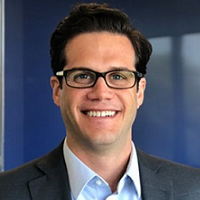 By Marc Rabner, MD, MPH, Director, Clinical Applications, Audacious Inquiry LLC
By Marc Rabner, MD, MPH, Director, Clinical Applications, Audacious Inquiry LLC
Twitter: @A_INQ
Video conferencing kept us linked during the pandemic, but there was always something missing. Last week’s State HIT Connect Summit held in Baltimore, Maryland filled the gap with three days of real-life conversations and face-to-face meetings. Seeing partners that I work with daily and weekly in person, some for the first time, was exciting as leaders came together to consider new, post-pandemic ways to partner and support common goals.
Several valuable educational sessions were also the highlight of my week at the Summit with specific focus on how to use data and health IT to share SDOH, support public health, and address healthcare disparities and inequity. For example, Dr. Thomas Mason, Chief Medical Officer at HHS’s Office of National Coordinator (ONC) for HealthIT, noted that health equity is one of the ONC’s top priorities in 2022. Dr. Dora Hughes, Chief Medical Officer for The CMS Innovation Center, also shared work done by CMS to analyze how the Capability Maturity Model Integration (CMMi) advances health equity.
Aneesh Chopra, President, Care Journey and Co-Founder of Hunch Analytics, spoke as part of a panel to a packed general session of Medicaid agency experts to discuss data challenges and opportunities in healthcare. Based on the analogy of a bridge, Vishal Chaudry, Chief Data Officer, Washington State Healthcare Authority, mentioned during the session that medical data resides on one side of the river while SDOH and financial data sit on distant banks. Health data infrastructure exists, but the bridge to connect all the various types of health data has not been built. According to Chopra, “Now is the chance for everyone in the room to lead.”
Panelists also encouraged Medicaid beneficiary engagement through texting, and expanded screening using FHIR, APIs and surveys. Success requires trust, strong underlying data strategy, knowledge of each state’s population, and identifying changes or new programs that will deliver efficiency and positive healthcare change.
In the Establishing an Equity-Based Interoperable Data Ecosystem to Improve Individual and Community-Health Outcomes session with the Data Access Sectors for Health (DASH), ONC and CMS, Clare Tanner, Program Director, Michigan Public Health Institute, noted that building the conditions and creating the capacities to address well-being and equity depends on trust and relationships, especially across sectors. Technology and data systems that create barriers, work against trust, and can cause more harm than good. Now is the time to ensure technology enhances trust and relationships to serve as a catalyst, and not a barrier.
Public health was another key topic at the 2022 State HIT Connect Summit with a focus on progress across HIEs and Immunization Information Systems (IIS). Prior to the COVID pandemic, many states lacked access to vaccine information. Now there are population-based registries housed in state departments to ensure agencies have more complete data to make better public health decisions. HIEs were important partners in these improvement efforts.
For example, HIEs now have stronger partnerships with health departments to enrich data. In a general session on lessons learned from COVID-19 and public health data modernization, speakers discussed how HIEs also supported contact tracing efforts when public health agencies lacked contact information. Several HIE speakers noted that next steps include data analytics and bidirectional data for public and private health access, especially where health departments don’t have state or regional provider partnerships in place. HIEs were highlighted throughout the Summit as strategic partners to accelerate public health and address health equity.
When it comes to data sharing, there are specific use cases involving behavioral health and social needs data that deserve some additional attention. For example, I heard from audience members that Title 42 statute in the Code of Federal Regulations (CFR) was confusing as to what constitutes protected data and if consents were required for every redisclosure for substance use disorder patient records. As a result, most healthcare organizations remain very restrictive in its use. Hopefully updated regulations will better guide these types of specific data sharing rules to encourage interoperability while also ensuring patient privacy is well protected.
Finally, Medicaid agencies were encouraged to establish equity-based, interoperable data ecosystems to improve individual and community health outcomes. While the pandemic was a central theme throughout the week, attendees were encouraged to reflect on the progress made throughout the last two years and look ahead and think creatively about solutions that may not have been possible in a different era.
